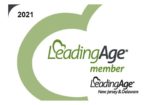As published in Provider Magazine, October 2018
Providers must weigh all factors when evaluating policies for staff and residents either authorizing or prohibiting surveillance cameras.
The news headlines for years have captured numerous cases of child abuse and break-ins through the emerging technology of surveillance cameras. Only recently has this technology made its way into long term and post-acute care facilities and been the subject of news headlines focusing on elder abuse through the use of “hidden cameras.”
Often, residents and family members tout their use as an important tool to expose and curb elder abuse in nursing and assisted living centers. At the same time, long term care facilities raise the myriad legal and practical challenges connected to policies authorizing or prohibiting the use of surveillance cameras in their facilities. The positions of both sides warrant further exploration and discussion.
Something to Talk About
Family members of long term care residents champion the use of cameras for several reasons. They can be an effective tool to monitor the care of their loved ones or to ferret out or prevent abuse. Surveillance cameras can also allow family members to make “virtual visits” to the facility and their loved one. This is particularly helpful for family members who live at great distances or if their schedules don’t permit frequent visits.
Facilities that oppose surveillance cameras often point to far less intrusive means of accomplishing the same purpose, such as cell phones or services available in the facility such as Skype or WhatsApp.
However, some facilities advocate for the use of cameras to serve their legitimate business purposes and the needs of their residents. Some facilities have begun to use surveillance cameras as a marketing tool to promote the quality of care and reputation of the facility. This has the effect of giving residents and their loved ones peace of mind. The monitoring also helps prevent elder abuse and neglect from happening in the first place and to determine whether any claims lodged are valid.
Raising Concerns
On the other hand, facilities often raise many concerns from a legal and regulatory perspective.
For example, the Health Insurance Portability and Accountability Act (HIPAA), a statute that impacts all health care providers, includes a privacy rule that prohibits providers from sharing health information without the written consent of the resident or of his authorized representative. To the extent that the surveillance camera transmits audio, its usage may result in a breach of the HIPAA privacy rule since people with access to the camera may not be authorized to receive confidential health care information.
In addition, state and federal wiretapping laws may prohibit the audio recording of communications without the consent of either party to the communication. This poses the risk of criminal and civil penalties, to the extent that the communication is not authorized.
Putting Privacy First
Surveillance cameras also raise other confidentiality concerns for facilities and their residents. The privacy of residents is paramount for their comfort and health and to acclimate them to a community atmosphere.
Residents who are unaware that their loved ones may be watching them raise concerns, particularly as the video recording may be done surreptitiously and may capture changing, bathing, or private communications.
Issues may also arise as to who has the authority to permit the use of the surveillance camera, the resident or the family member, and if a family member, whether the health care proxy or power of attorney authorizes that decision. Notice of the potential use of surveillance cameras in the facility is also an important consideration as it relates to visitors, residents, residents who share rooms, and vendors. Signage may be required.
Cost Considerations
In addition to legal considerations, the use of surveillance cameras results in countless other practical and fiscal concerns, such as the costs for implementing or facilitating the technology.
Generally, the cost of the surveillance camera will be the responsibility of the resident or family member. However, upgrades to the infrastructure of the facility may be required to set up the use of the cameras.
In addition, costs associated with the development of and training on surveillance camera policies must be considered. These include resident agreements, employee handbooks, vendor agreements, and additional facility policies. Moreover, the use of surveillance equipment for one resident may require changes to the room assignments for others, particularly when one resident does not want to be recorded.
Employee Relations
The use of surveillance cameras, particularly in a residential setting, may give way to the aura of an Orwellian atmosphere, particularly with staff.
Although the law in most states is silent as to the use of surveillance technology, certain states require employers to provide notice of its use to staff. Specifically, usage of cameras may impact employee morale as staff are aware that they are being monitored on their overall quality of care and communication, not only by their employer, but also by family members.
The prevalence of social media only acts to underscore the pros and cons of surveillance cameras in the long term care setting. While social media can be used to market the quality of care provided by the facility, it may also expose the facility to reputational damage and compromise privacy for its residents.
Increasingly, family members and, at times, staff are taking to YouTube, Twitter, Instagram, or Facebook to comment on the facility or post photos or videos of residents. Although these concerns cannot always be mitigated as they relate to family members, carefully crafted social media policies for staff are vital to the success of the facility and to help avoid claims.
Long term care providers must weigh all of these factors when evaluating policies for staff and residents either authorizing or prohibiting surveillance cameras. They must be prepared to adapt to the evolving technological advances that can impact the operation of a facility.
The question of whether a surveillance camera is appropriate for a facility should be carefully considered, and the answer may vary from facility to facility. Owners and managers should be aware that certain states have enacted statutes and regulations regarding the use of surveillance cameras.
Timothy Ford is a member of the Employment Law, Commercial Litigation, and Closely Held Business Law Departments. He concentrates his practice in several areas of law, including representation of health care and long term care facility owners and administrators. He assists them on issues that include employment, contractual relationships with residents, real estate, and litigation matters.
To read the article on the Provider Magazine website, click here.








